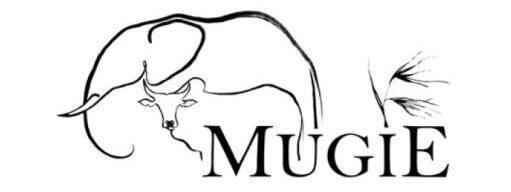Animal Husbandry
Mugie Trading Stock
Wildlife and livestock can coexist in harmony to create a healthy landscape. By managing both responsibly, we can preserve the land while generating income through livestock sales. Mugie Conservancy’s approach integrates sustainable practices that benefit both the environment and local communities. Mugie Trading Stock, a resource-sharing, livestock-to-market initiative, allows local herders to benefit from our holistic grazing system. Through this program, herders are invested in the future of Mugie and its conservation efforts, with cattle thriving in health and condition, gaining weight in a way that supports, rather than harms, the wildlife and rangelands we work to protect.
Using rotational grazing and holistic management, we aim to restore grasslands and enhance biodiversity. This approach not only supports carbon sequestration, drought resilience, and food security but also helps to create financially viable communities. The integration of these practices ensures that both wildlife and livestock can coexist sustainably, contributing to the long-term health of the land and the well-being of local communities.
Cattle Identification Project
In collaboration with the Regional Pastoral Livelihoods Resilience Project (RPLRP), Mugie is introducing a Livestock Identification and Traceability System. This involves microchipping cattle and recording data from birth through sale and slaughter. Unlike traditional methods like ear tags, which can be lost or tampered with, microchipping offers a humane, permanent form of identification. This project aims to revolutionize livestock management in Kenya.
The benefits of this system are manifold. Not only does it ensure traceability for food safety, but it also improves the reputation of herders by ensuring consumers know the exact source of their meat. High-quality beef from well-managed herds can command better prices, encouraging responsible farming practices that support both wildlife and rangeland health. Additionally, tracking the development of cattle will help farmers make informed decisions on breeding, resource allocation, and disease prevention.
Mugie Cattle Breeding Programme
The Mugie Cattle Breeding Programme is an essential part of our livestock management strategy, aimed at improving cattle bloodlines through selective breeding. We are now incorporating Artificial Insemination (AI) services, with the goal of providing AI to 1,000 community cattle annually, as well as to Mugie’s own dairy and beef herds. Semen for AI is sourced from the Kenya Animal Genetic Resources Centre in Kabete, including sexed semen for our dairy herd. Additionally, Mugie maintains two Boran bulls for natural breeding and has sourced stock from reputable farms in Laikipia, prioritizing individuals that will add value to our program. By focusing on quality over quantity, we aim to improve cattle genetics, leading to better market prices, shorter finishing times, and higher-quality beef.
These efforts not only enhance cattle stock but also create economic opportunities for the local community and contribute to the growth of Laikipia’s beef industry on a national scale. Through this program, Mugie promotes the responsible management of rangelands and wildlife habitats, serving as a model for sustainable livestock farming that balances economic growth with environmental stewardship.
Ultra High Density Grazing (UHDG)
The Mugie Conservancy employs Ultra High Density Grazing as a key strategy to ensure the health and sustainability of our rangelands while optimizing livestock productivity. This practice involves grazing livestock in concentrated groups for short periods, followed by extended rest periods to allow the land and forage to recover. The high-density grazing mimics the natural movements of wild herbivores, helping to regenerate plant species, control invasive plants, and promote biodiversity across the landscape. Through careful management of grazing patterns, we foster healthier rangelands that support both wildlife and livestock, aligning with our commitment to preserving northern Kenya’s ecosystems.
UHDG not only enhances the quality of forage but also improves soil health, boosts water retention, and prevents erosion by encouraging deep root growth and better water infiltration. This method helps sustain the productivity of the land, ensuring that both wildlife and local communities can continue to benefit from healthy and thriving rangelands. By integrating UHDG into our conservation and land management practices, Mugie Conservancy is leading the way in promoting sustainable rangeland management, supporting local economies, and conserving vital ecosystems.

